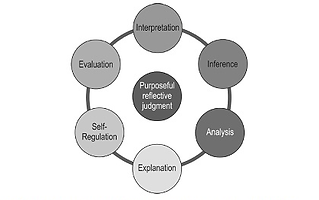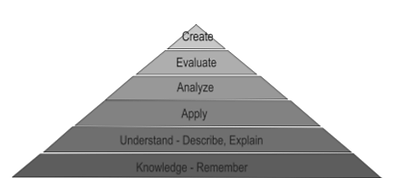
Critical thinking
Critical thinking is a skill which is constantly put into practice, it is part of our day to day issues. We think critically when we are rational and evaluate what we are told, using and applying previous information we know. To this, we can add searching for new information and different points of view. In other words, critical thinking involves a balanced and considered decision making, and it´s essential that children learn to be critical thinkers throughout their school years.
If we use Bloom's Taxonomy (1971) (Figure 1) we can consider that critical thinking involves the analyse and evaluation levels. When we analyse, we break something into small parts to examine it better and clearly; then we evaluate this based on information which we have collected and organized previously. Bloom's Taxonomy can be used as a tool for teachers to understand the way students internalize information about a certain issue.
Critical thinking should be prompt by teachers during the activities and exercises done in class. Art is a great topic to work with, as artworks can have an impact on student’s perception of reality if they think critically about it. Artworks can be used to talk and debate different topic, for example, social issues, allowing pupils to connect their reality with the painter’s purpose, acquiring art a meaning for them.
Techers can also consider Facione (2011), to recognize different forms of judgments followed by skills to think critically. criticism is making judgments. We consider these judgments opinions that students use to create a vision of reality supported by fundamental ideas. The analysis of arguments deserves special mention as Facione (2011) states that one should establish reasons to support or contest a claim, an opinion, or a point of view (what he calls purposeful reflective judgment, see Figure 2). This, in relation to arts, can be illustrated as trying to find the intentions artists had at the moment of painting.
As we can see, there are many ways to work critical thinking with children, using adapted material to age and needs of students. By working on critical thinking, we can also get students to understand topics, and therefore, add interest and motivation to lessons. As Pineda (2004) points out, “becoming a critical thinker is a life-long task that is only developed and sharpened through time and learning experiences”, so it is in our hands as future teachers to develop these skills adequately.
References.
-
Bautista, L. Z. & Parra, I. J. (2016). EFL Students' Perceptions of Social Issues in Famous Works of Art. HOW. 23(1), 85-102.
"Education is not the learning of facts, but the training of the mind to think." - Albert Einstein



